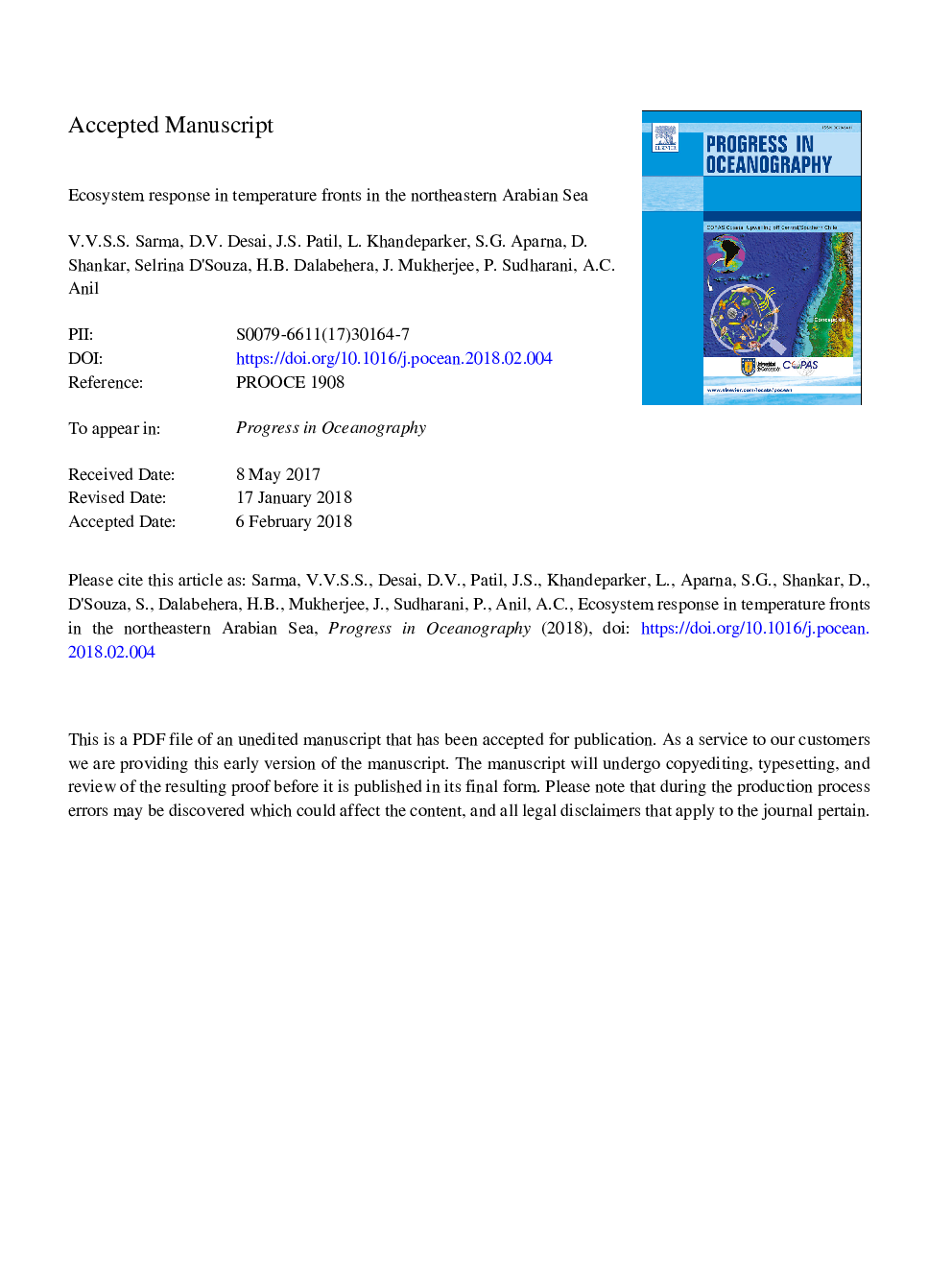| کد مقاله | کد نشریه | سال انتشار | مقاله انگلیسی | نسخه تمام متن |
|---|---|---|---|---|
| 8886638 | 1627893 | 2018 | 61 صفحه PDF | دانلود رایگان |
عنوان انگلیسی مقاله ISI
Ecosystem response in temperature fronts in the northeastern Arabian Sea
ترجمه فارسی عنوان
پاسخ اکوسیستم در جبهه دما در دریای شمال شرقی دریای
دانلود مقاله + سفارش ترجمه
دانلود مقاله ISI انگلیسی
رایگان برای ایرانیان
کلمات کلیدی
سیستم های جلو، مخلوط عمودی، زئوپلانکتون، اقیانوس هند، جریان مرزی،
موضوعات مرتبط
مهندسی و علوم پایه
علوم زمین و سیارات
زمین شناسی
چکیده انگلیسی
Productivity is low in tropical waters outside the traditional upwelling regimes, making temperature fronts a potential marker of fish. To test the hypothesis that all temperature fronts harbour high concentrations of nutrients and phytoplankton biomass, several fronts were sampled during winter 2014 in the northeastern Arabian Sea (NEAS). The data suggest that all the sampled temperature fronts are active biological spots owing to injection of subsurface nutrients into the surface layer. The plankton response, however, varied, with enhanced zooplankton biomass (total bacterial counts) in the shelf (open-ocean) fronts, suggesting that classical (microbial) food webs are active. The plankton response depended on the age of the front, and, more importantly, the initial or background conditions under which a front forms. Determination of the initial conditions for a front is complicated owing to advection by the mean current and mesoscale eddies and this advection itself modulates the background conditions. An increase in integrated Chlorophyll-a (Chl-a), but not surface Chl-a, was observed in both shelf and open-ocean fronts, suggesting that depth -integrated Chl-a is likely to be a better marker of potential fishery zones (PFZs). This study suggests that the PFZ advisories may be improved by including depth-integrated Chl-a, the age of the front, and background conditions in the procedure.
ناشر
Database: Elsevier - ScienceDirect (ساینس دایرکت)
Journal: Progress in Oceanography - Volume 165, JulyâAugust 2018, Pages 317-331
Journal: Progress in Oceanography - Volume 165, JulyâAugust 2018, Pages 317-331
نویسندگان
V.V.S.S. Sarma, D.V. Desai, J.S. Patil, L. Khandeparker, S.G. Aparna, D. Shankar, Selrina D'Souza, H.B. Dalabehera, J. Mukherjee, P. Sudharani, A.C. Anil,
